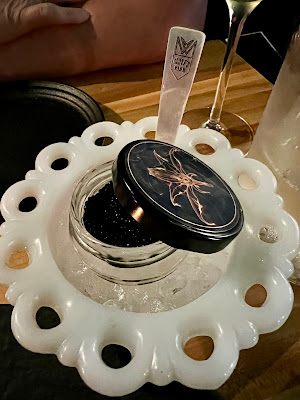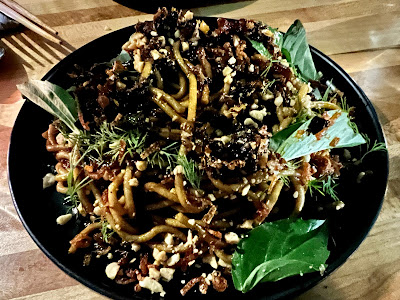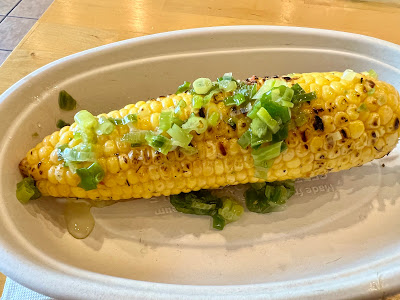******************************************************
1) Faccia Brutta, a new coastal Italian restaurant from chefs and restaurateurs Ken Oringer and Jamie Bissonnette, opened earlier this week for dinner service. This restaurant "focuses on seasonal dishes highlighting the diverse cuisine of the coastal Italian region, drawing inspiration from their travels across Liguria, Sicily, Sardinia, and more." It will serve seasonal cuisine with locally sourced ingredients featuring snacks, crudos, housemade pastas (with gluten-free options cooked in a separate kitchen) and more.
Menu highlights include:
Grilled Octopus with black rice, guanciale and fava beans
Live Scallop served in the shell with lardo, crunchy endive and black truffle vinaigrette
Squid Ink Trottole with Maine uni, melted leeks and Calabrian chili
Pansotti, a half moon ravioli typical in Liguria with swiss chard, ricotta, walnuts, brown butter and fiddleheads
Orecchiette Baresi with inspiration from Puglia featuring an beef gravy with nduja, tomatoes
Christmas Style Branzino, a whole fish butterflied with one side cooked with salsa verde and the other with pesto trapanese
Grilled Lobster with Calabrian chili butter, fregola and clam vinaigrette
Their beverage program includes cocktails such as 1794 (Capari, rye, sweet vermouth, chocolate mole bitters and an orange twist), a fun twist on the Negroni; a selection of Spritzes, and more. The wine list focuses on approachable wines from the coastal Italian area, as well as selections from around the world, all sourced from smaller organic producers.
Grilled Octopus with black rice, guanciale and fava beans
Live Scallop served in the shell with lardo, crunchy endive and black truffle vinaigrette
Squid Ink Trottole with Maine uni, melted leeks and Calabrian chili
Pansotti, a half moon ravioli typical in Liguria with swiss chard, ricotta, walnuts, brown butter and fiddleheads
Orecchiette Baresi with inspiration from Puglia featuring an beef gravy with nduja, tomatoes
Christmas Style Branzino, a whole fish butterflied with one side cooked with salsa verde and the other with pesto trapanese
Grilled Lobster with Calabrian chili butter, fregola and clam vinaigrette
Their beverage program includes cocktails such as 1794 (Capari, rye, sweet vermouth, chocolate mole bitters and an orange twist), a fun twist on the Negroni; a selection of Spritzes, and more. The wine list focuses on approachable wines from the coastal Italian area, as well as selections from around the world, all sourced from smaller organic producers.
Faccia Brutta is now open six days a week, with service starting at 5PM to 10PM, Monday through Saturday.
2) Rochambeau has now initiated Rochambeau After Dark. their new late-night weekend programming. Every Friday and Saturday night, Rochambeau will now open its doors for weekend evenings full of live music and fun. The party starts with live jazz in Rochambeau's café space from 6:30 to 9:30 p.m. followed by cocktails, dancing, and a DJ in the restaurant's first-floor bar/lounge area from 10 p.m. to 2 a.m.
Rochambeau After Dark is free to attend but VIP table reservations are available for purchase and can be made by calling (617) 247-0400. VIP includes prime table seating and access to a special VIP martini and wine bar.
2) Rochambeau has now initiated Rochambeau After Dark. their new late-night weekend programming. Every Friday and Saturday night, Rochambeau will now open its doors for weekend evenings full of live music and fun. The party starts with live jazz in Rochambeau's café space from 6:30 to 9:30 p.m. followed by cocktails, dancing, and a DJ in the restaurant's first-floor bar/lounge area from 10 p.m. to 2 a.m.
Rochambeau After Dark is free to attend but VIP table reservations are available for purchase and can be made by calling (617) 247-0400. VIP includes prime table seating and access to a special VIP martini and wine bar.






































